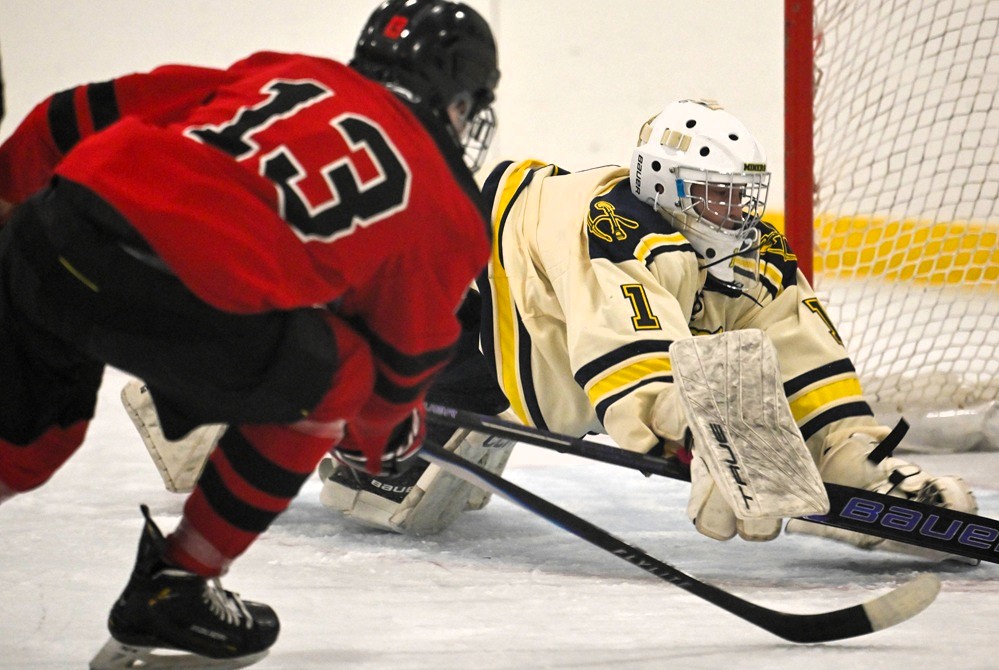
Be the Referee: Pass Interference
September 9, 2014
This week, MHSAA assistant director Mark Uyl explains one of the toughest calls to make on the football field.
"Be the Referee" is designed to help educate people on the rules of different sports, to help them better understand the art of officiating and to recruit officials. The segment can be heard on Mondays, Wednesdays and Fridays during the school year on The Drive With Jack Ebling on WVFN-AM, East Lansing.
Below is this week's segment - Pass Interference - Listen
Today we’re going to talk about one of the most difficult calls for any football official – pass interference. It’s important to know that whenever a forward pass is thrown beyond the line of scrimmage that both players – the offensive receiver as well as the defender – each have an equal right to make a play on the football.
Now, not all contact will automatically result in a pass interference foul. The official must judge if that early contact before the ball arrives has placed one of the two players at a distinct disadvantage. When that contact does create the disadvantage, you have a foul for pass interference. When the contact is minimal and is simply incidental, no foul has occurred.
Past editions
Aug. 25 - Targeting - Listen
Sept. 4 - Concussions - Listen

Be the Referee: Puck on Goal Netting
By
Paige Winne
MHSAA Marketing & Social Media Coordinator
December 9, 2025
Be The Referee is a series of short messages designed to help educate people on the rules of different sports, to help them better understand the art of officiating, and to recruit officials.
Below is this week's segment – Puck on Goal Netting - Listen
We’re on the ice today, where after being last touched by Team A, the puck comes to rest on top of the goal netting. What happens?
New this year in high school ice hockey: If a puck is on the top of the goal netting, it’s an immediate stoppage. The puck is considered out of play.
It goes back into play via a faceoff from the nearest faceoff dot in the defending team’s zone.
Why the change from previous years? Because a puck on top of the netting creates too many problematic scenarios to be considered playable – you could have high sticking, closed hand (handling of the puck), goalkeeper contact or player-in-the-goal-crease.
If the puck is on top of the goal netting, blow the whistle and resume with a faceoff.
Previous 2025-26 editions
Dec. 2: Goaltending vs. Basket Interference - Listen
Nov. 25: Football Finals Instant Replay - Listen
Nov. 18: Volleyball Libero Uniforms - Listen
Nov. 11: Illegal Substitution/Participation - Listen
Nov. 4: Losing a Shoe - Listen
Oct. 28: Unusual Soccer Goals - Listen
Oct. 21: Field Hockey Penalty Stroke - Listen
Oct. 14: Tennis Double Hit - Listen
Oct. 7: Safety in Football - Listen
Sept. 30: Field Hockey Substitution - Listen
Sept 23: Multiple Contacts in Volleyball - Listen
Sept. 16: Soccer Penalty Kick - Listen
Sept. 9: Forward Fumble - Listen
Sept. 2: Field Hockey Basics - Listen
Aug. 26: Golf Ball Bounces Out - Listen
PHOTO Marquette's Skyler Blackburn and Negaunee goalie Kurt O'Brien scramble for the puck during a Nov. 8 matchup. (Photo by Randy Ritari.)

